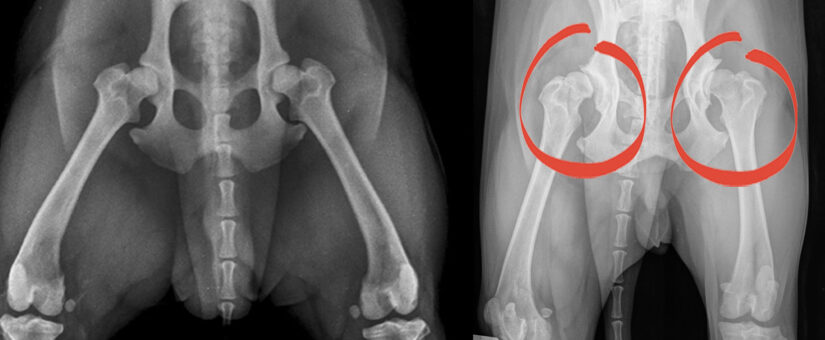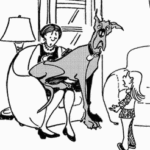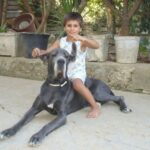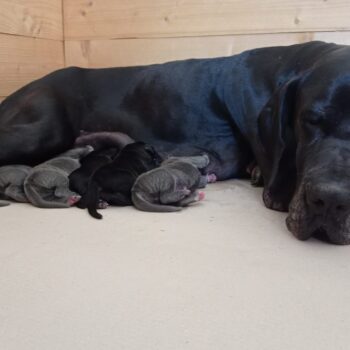
FCI classification of hip dysplasia
- On 25 March 2021
- Great Dane, dysplasia, enci, fci, information, Pathologies, salute
Anca
Grade A: no signs of hip dysplasia (HD 0 / HD -)
The head of the femur and the acetabulum are congruent. The craniolateral border appears sharp and slightly rounded. The joint space is clear and uniform. The acetabular angle according to Norberg * is about 105 ° or higher. Furthermore, when the craniolateral border slightly surrounds the femoral head in the lateral caudal direction, the joint conformation is defined as "excellent" (A1).
Grade B: almost normal hip joint (HD 1 / HD +/-)
The head of the femur and the acetabulum appear slightly incongruent and the acetabular angle according to Norberg is about 105 ° or the center of the femoral head is located medial to the dorsal acetabular edge with congruity of the femoral head and the acetabulum.
Grade C: slight hip dysplasia (HD 2 / HD +)
The head of the femur and the acetabulum appear inconsistent, the acetabular angle according to Norberg is about 100 ° and / or the craniolateral edge is flattened. There may be irregularities or minor signs of osteoarthritis changes in the cranial acetabular margin, caudal or dorsal or of the head and neck of the femur.
Grade D: medium hip dysplasia (HD 3 / HD ++)
Obvious incongruity between the femoral head and the acetabulum with subluxation. The acetabular angle according to Norberg is greater than 90 °. There will be a flattening of the craniolateral rim and / or signs of osteoarthritis.
Grade E: severe hip dysplasia (HD 4 / HD +++)
There are marked dysplastic changes in the hips, as a distinct dislocation or subluxation, a Norberg acetabular angle of less than 90 °, evident flattening of the cranial acetabular margin and deformation of the femoral head (mushroom-shaped or flattened) or the presence of other signs of osteoarthritis.
*acetabular angle according to Norberg: the angle at which the articular surfaces of the femoral head and the acetabulum come into contact.
This type of assessments are performed on radiographs.
Dogs with grade hip dysplasia 3 and 4 they are not suitable for reproduction.
Elbow
Degree 0: normal elbow
The subject can be used for reproduction.
There are no signs of abnormality.
Grade I: mild osteoarthritis
The subject can be used for reproduction but only with "Grade 0" subjects.
There is a formation of osteophytes less than 2mm wide; and / or there is an increase in sclerosis of the subchondral bone in the region of the distal part of the trochlear groove of the ulna; and / or an obvious step appears between the head of the radius and the caudal part of the trochlear groove in the sagittal projection.
Grade II: moderate osteoarthritis
The subject cannot be used for reproduction.
There is a formation of osteophytes of amplitude between 2 and 5 mm.
Grade III: severe osteoarthritis
The subject cannot be used for reproduction.
There is a formation of osteophytes larger than 5 mm; evidence of a fragmented medial coronoid process or a lack of union of the anconeus process leads to grade III regardless of the degree of osteoarthritis present.







